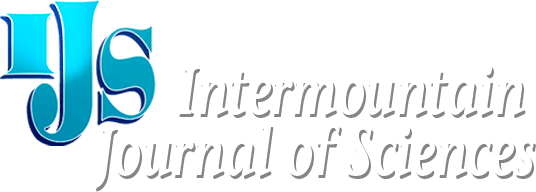As the manager for the Wall Creek Wildlife Management Area for 34 years, I will provide an overview of the history of the FWP pu...
- Volume 17, No. 1-4, Issue , 2011
- Part of Biological Sciences - Terrestrial
- Authored by Hand, B.K., Carlson, R.T., Glassy, J., Landguth, Erin
- Abstract • Montana Chapter of the Wildlife Society (TWS) - Presentation Abstract
Maintenance of species and landscape connectivity has emerged as an urgent need in the field of conservation biology. Current ga...
- Volume 17, No. 1-4, Issue , 2011
- Part of Biological Sciences - Aquatic
- Authored by Pilgrim, Kristine L., Schmetterling, David A., McKelvey, Kevin S., Schwartz, Micheal K., Young, Micheal K., Adams, Susie
- Abstract • Montana Chapter of the Wildlife Society (TWS) - Presentation Abstract
Sculpin (Cottus spp.) are small, cryptic, bottom-dwelling fish native to cool and coldwater systems throughout North America. Al...
- Volume 17, No. 1-4, Issue , 2011
- Part of Biological Sciences - Terrestrial
- Authored by Mosher, Brittany A., Rotella, Jay J., Saab, Victoria A., Hollenbeck, Jeffrey P.
- Abstract • Montana Chapter of the Wildlife Society (TWS) - Presentation Abstract
Recent epidemics of mountain pine beetles (Dendroctonus ponderosae) will fundamentally alter forests of the Intermountain West, ...
Students today need to be motivated to learn using methods that stimulate their creativity and excite them to look deeper into a...
- Volume 17, No. 1-4, Issue , 2011
- Part of Biological Sciences - Terrestrial
- Authored by Beever, Erik A., Ray, Chris, Wilkening, Jennifer L., Mote, Philip W., Brussard, Peter F.
- Abstract • Montana Chapter of the Wildlife Society (TWS) - Presentation Abstract
Both paleontological and contemporary results have suggested that montane ecosystems to be systems of relatively rapid faunal ch...
When distinct δ13C and δ15N values of potential prey are known, stable isotope analysis (SIA) of wolf (Canis lupus) hair can b...
Moose (Alces alces shirasi) populations across Montana have expanded in the last century, both in geographic range and in popula...
Roads are pervasive sources of habitat fragmentation around the world, affecting an estimated 19 percent of the land area of the...
No demographic information exists on the status of Glacier National Park’s (GNP) black bear (Ursus americanus) population. In ...
